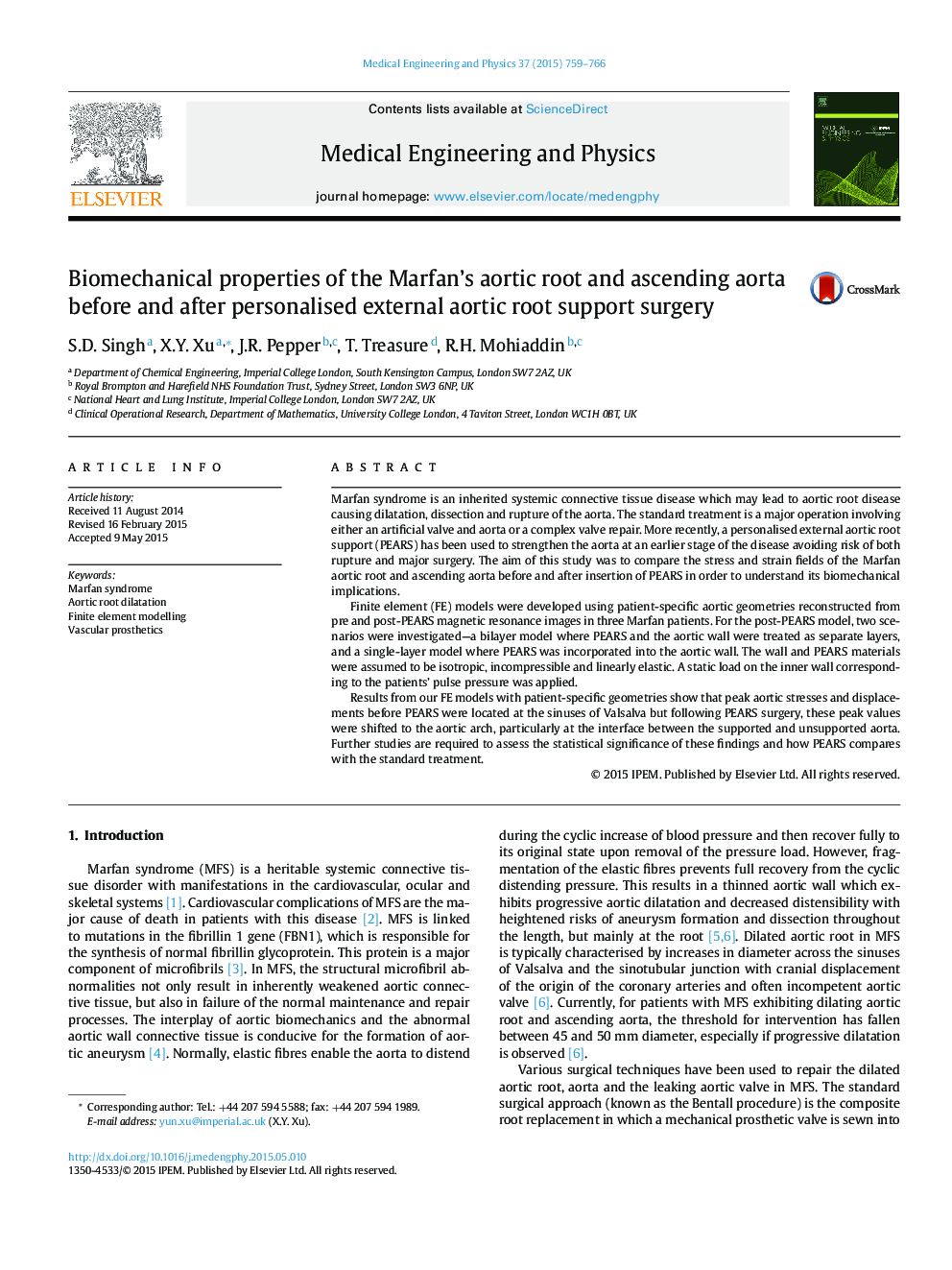| Article ID | Journal | Published Year | Pages | File Type |
|---|---|---|---|---|
| 875674 | Medical Engineering & Physics | 2015 | 8 Pages |
•Patient-specific models were built to examine changes in biomechanical stresses in the aorta of Marfan patients after PEARS.•Peak aortic stresses and displacements before PEARS were located at the sinuses of Valsalva but following PEARS surgery, these peak values were shifted to the aortic arch, particularly at the interface between the supported and unsupported aorta.
Marfan syndrome is an inherited systemic connective tissue disease which may lead to aortic root disease causing dilatation, dissection and rupture of the aorta. The standard treatment is a major operation involving either an artificial valve and aorta or a complex valve repair. More recently, a personalised external aortic root support (PEARS) has been used to strengthen the aorta at an earlier stage of the disease avoiding risk of both rupture and major surgery. The aim of this study was to compare the stress and strain fields of the Marfan aortic root and ascending aorta before and after insertion of PEARS in order to understand its biomechanical implications.Finite element (FE) models were developed using patient-specific aortic geometries reconstructed from pre and post-PEARS magnetic resonance images in three Marfan patients. For the post-PEARS model, two scenarios were investigated—a bilayer model where PEARS and the aortic wall were treated as separate layers, and a single-layer model where PEARS was incorporated into the aortic wall. The wall and PEARS materials were assumed to be isotropic, incompressible and linearly elastic. A static load on the inner wall corresponding to the patients’ pulse pressure was applied.Results from our FE models with patient-specific geometries show that peak aortic stresses and displacements before PEARS were located at the sinuses of Valsalva but following PEARS surgery, these peak values were shifted to the aortic arch, particularly at the interface between the supported and unsupported aorta. Further studies are required to assess the statistical significance of these findings and how PEARS compares with the standard treatment.
